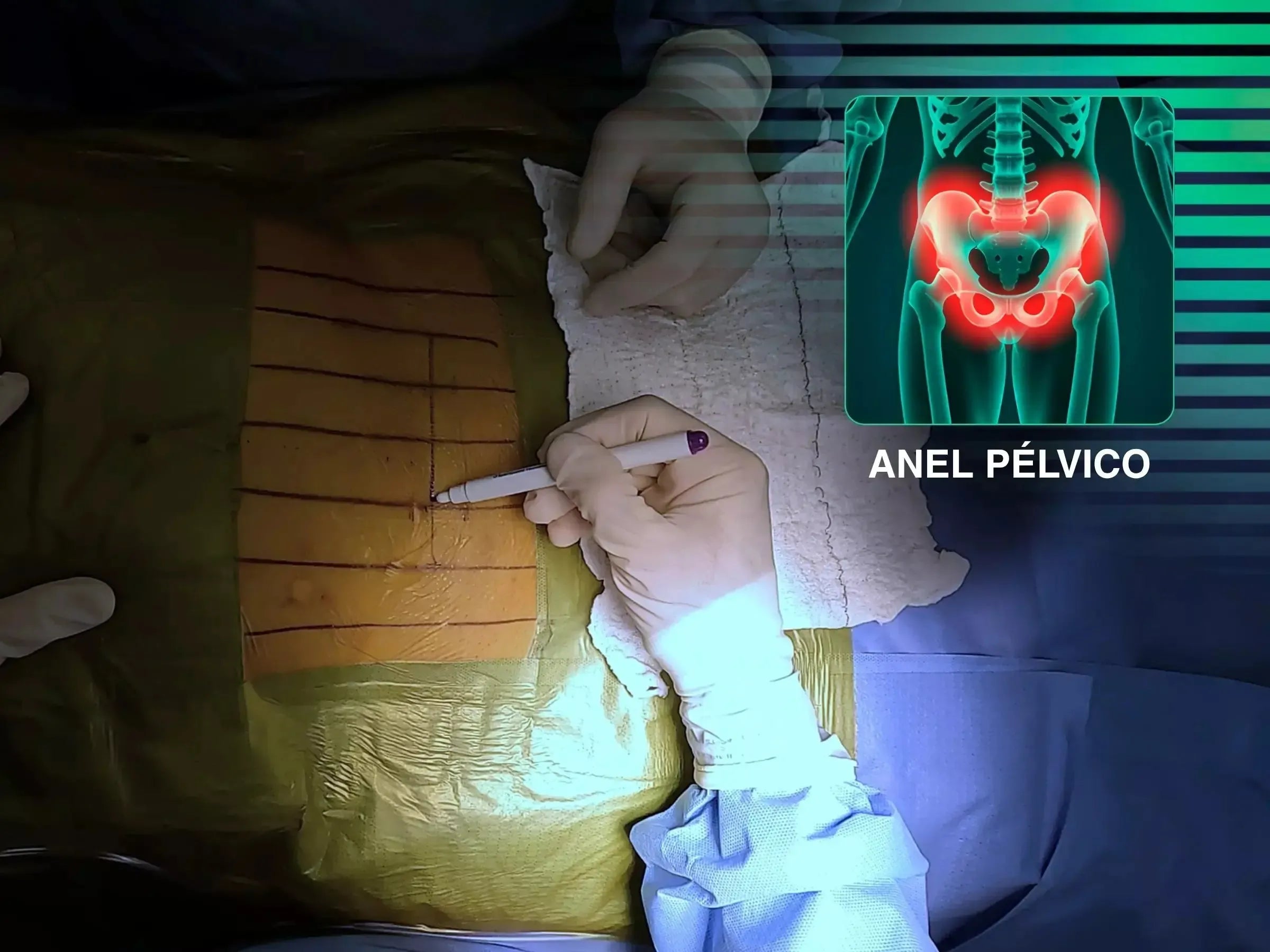
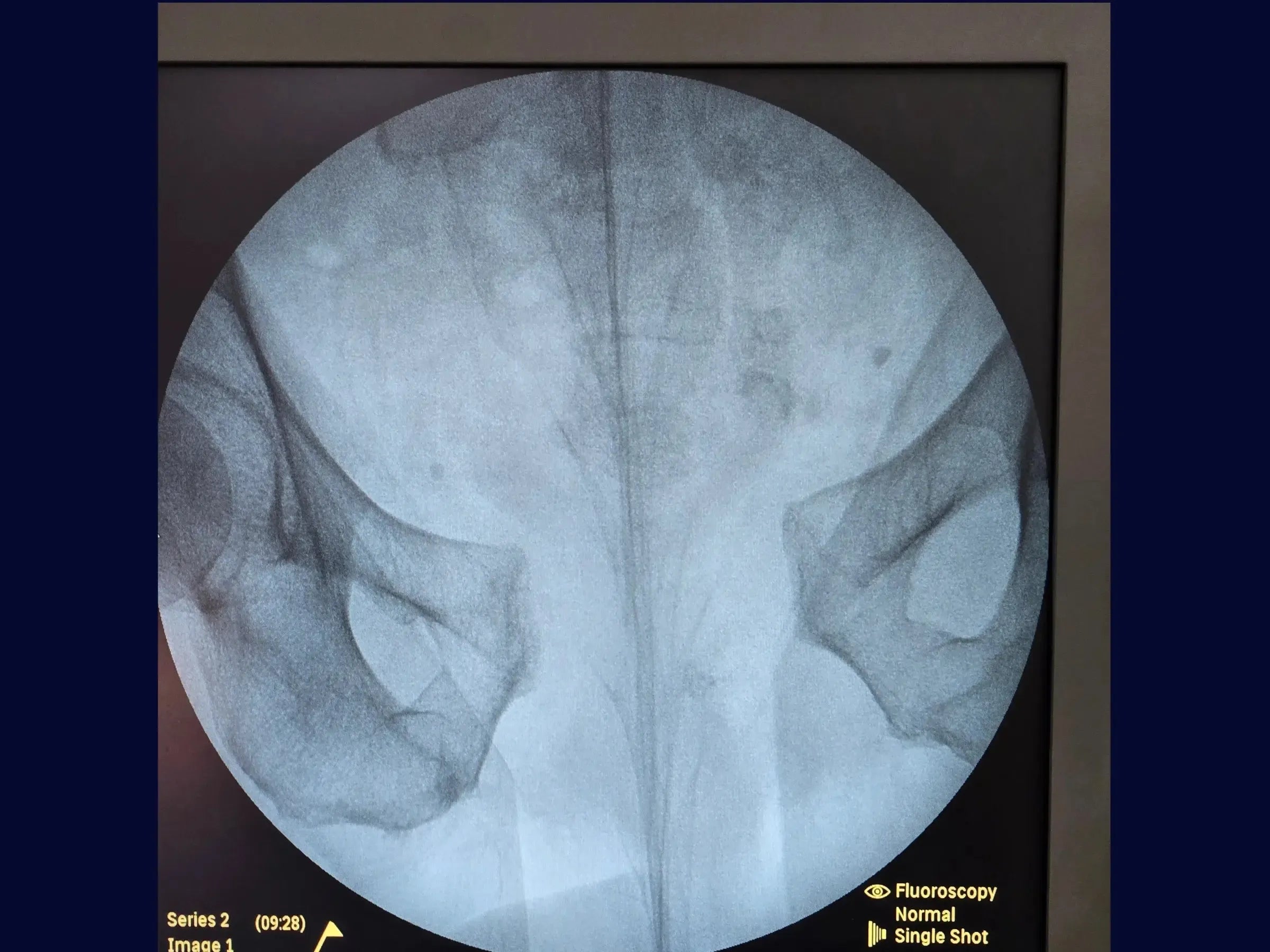
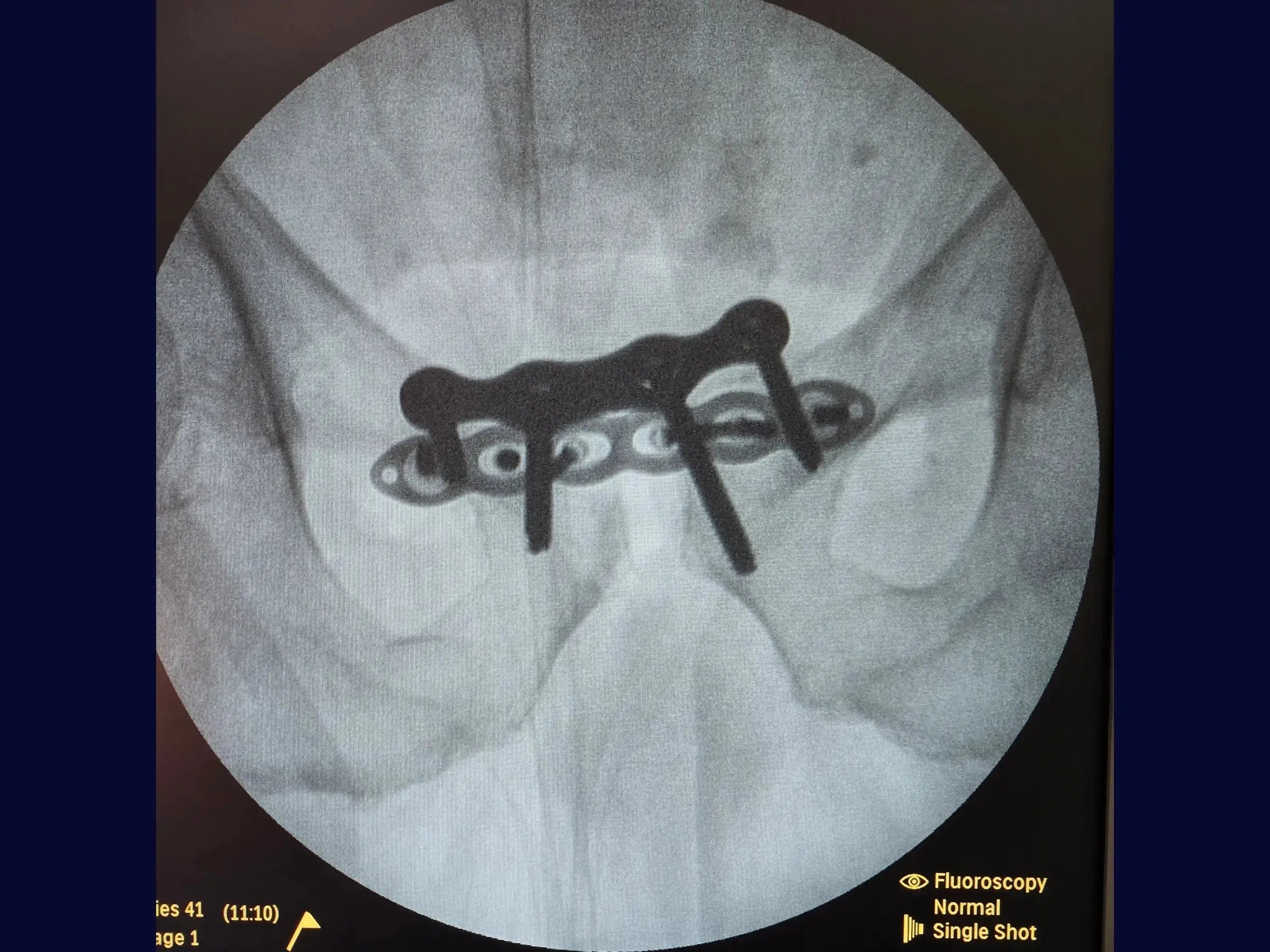
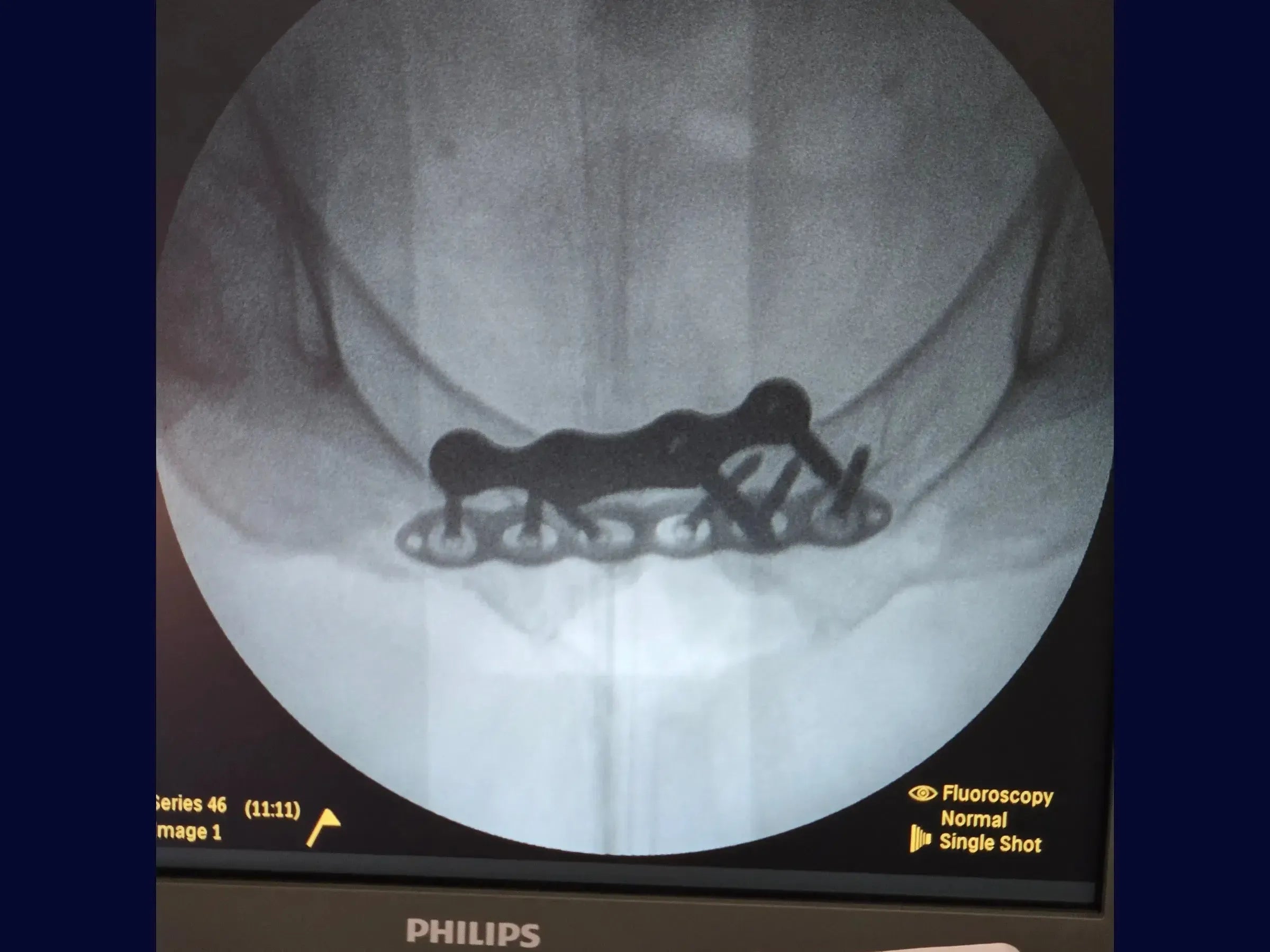
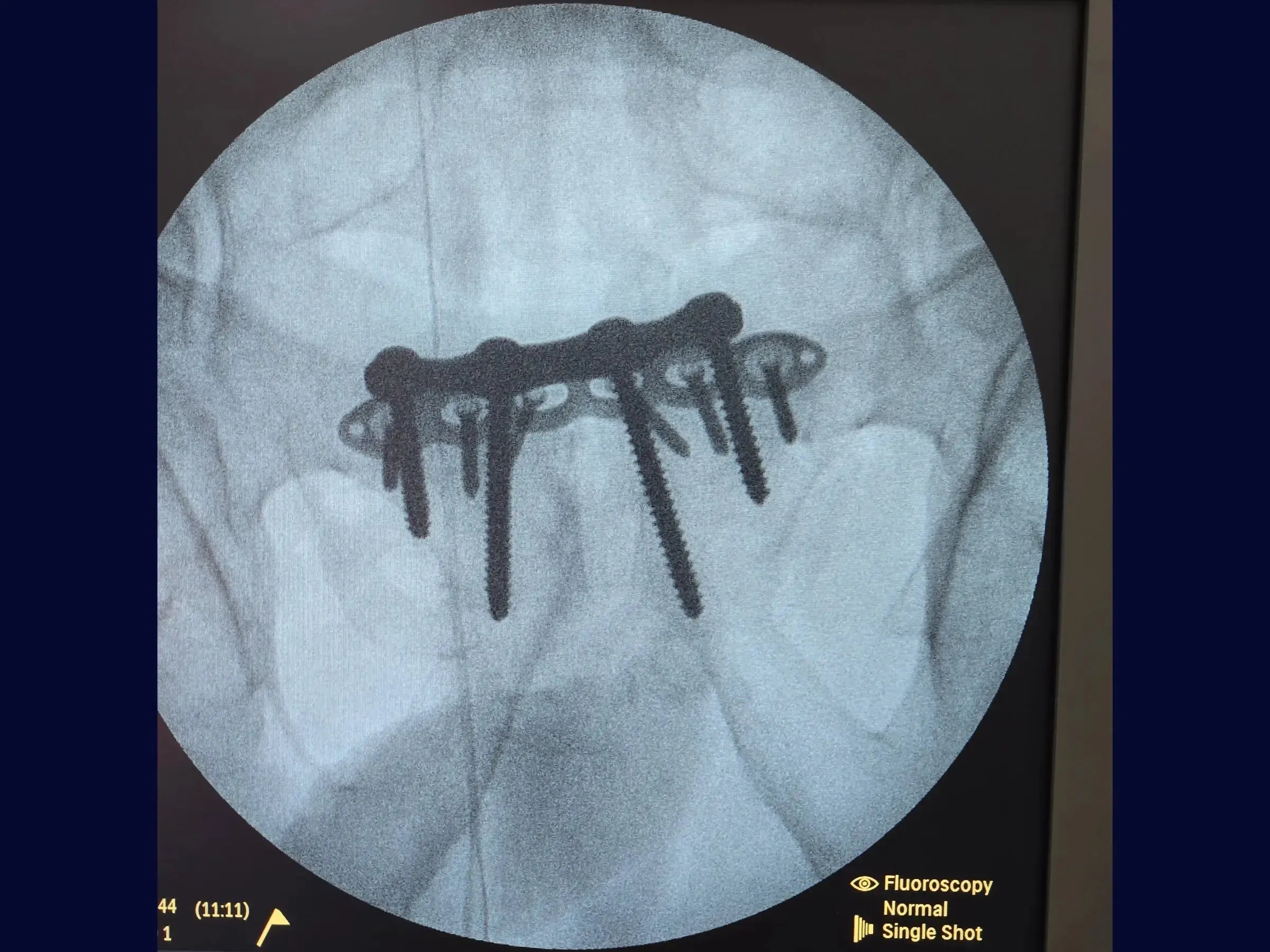
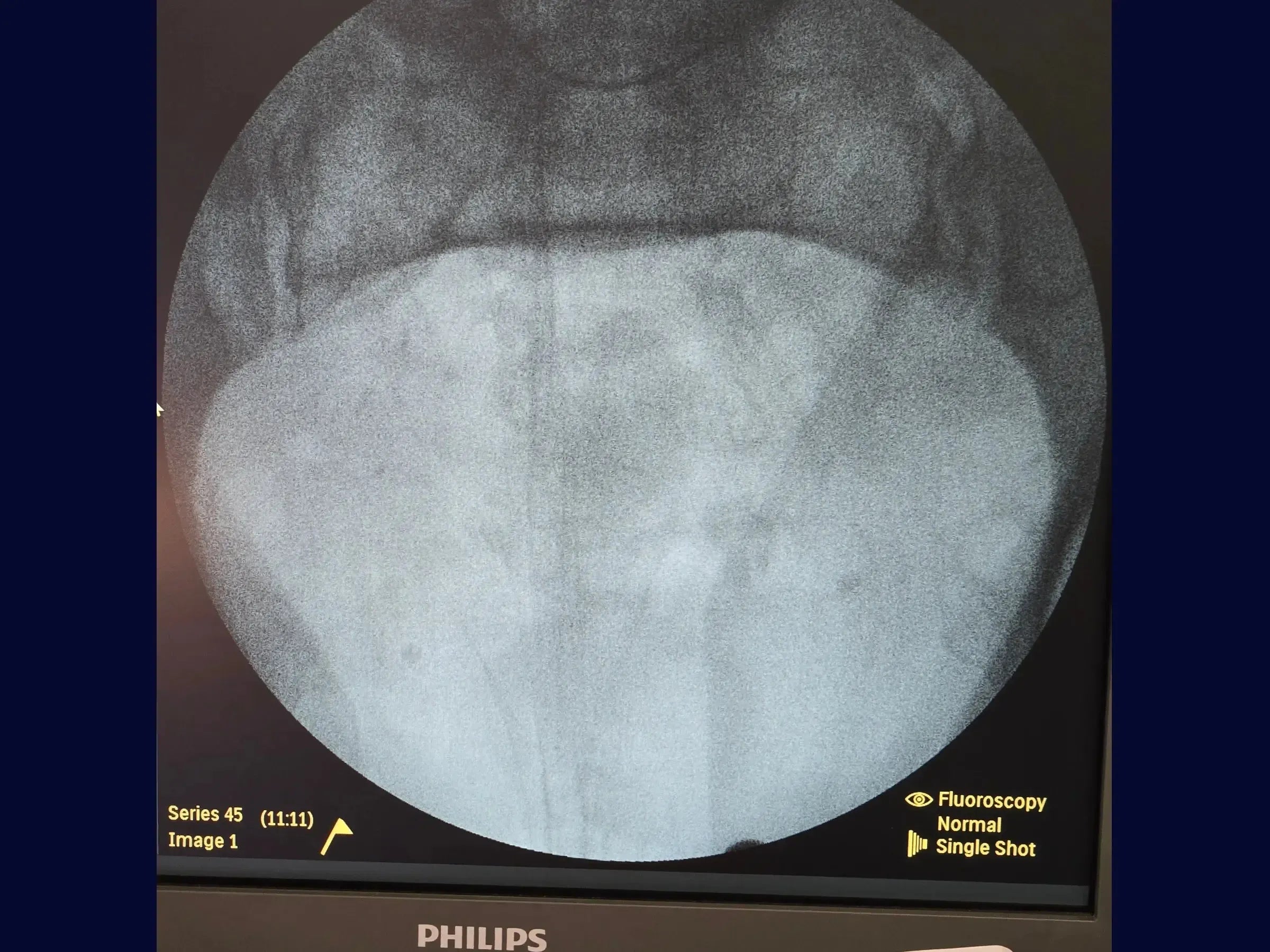
Pelvic Ring Injury "Open Book" (Pubic Symphysis Dislocation)
Master the 'open book' pelvic injury with surgical immersion: from reduction to definitive fixation and rehabilitation.


Videos em 4k
Dublagem Profissional
Escolher opções







Descrição
Master the surgical treatment of "open book" pelvic ring injury, an opening of the pubic symphysis. This training offers a hands-on immersion in anterior reduction and fixation, covering everything from patient positioning and surgical access, with attention to the bladder, to the use of temporary screws for controlled reduction and the application of plates for definitive fixation, aiming for pelvic ring stability and early rehabilitation.
Training Focus:
· Treatment of "open book" pelvic ring injury (pubic symphysis dislocation).
· Reduction and previous fixation of the pubic symphysis.
· Surgical access with bladder protection.
· Use of temporary screws for controlled reduction.
· Application of plates for definitive fixation.
· Pelvic ring stability and early rehabilitation.
Detailed Content:
· Positioning and Access: Position the patient in a supine position for free access of the image intensifier. Make an incision approximately 2 cm above the pubic symphysis, exposing the fascia of the rectus femoris and the linea alba. Make a longitudinal incision along the linea alba and locate the pubic tubercle.
· Exposure and Preparation: Protect the bladder (previously emptied) with a flexible retractor. Detach the periosteum from the symphysis to create space for the plate. Identify the opening of the symphysis and, if necessary, clean the fibrosis. Position a Hohmann retractor in the obturator foramen for exposure.
· Temporary Reduction: Use temporary screws, one on each side of the symphysis, inserted from anterior to posterior with precise measurement.Use a specific clamp attached to these screws for reduction and adjustment, visually controlling the shear and opening.
· Final Fixation: With the reduction maintained, use a specific plate for the symphysis with the introduction of screws at a 30-degree angle. If non-locked screws are not secure, add a second previously locked plate for greater stability.
· Closure and Verification: Do not address the sacroiliac joint if the posterior ligaments are intact.Reinsert the rectus abdominal tendon and close the linea alba to prevent herniation. Continuously protect the bladder. Close the skin guided by dermographic marks for aesthetics.
Included Material:
· Detailed PDF: Covers everything from patient positioning, surgical access, exposure of the pubic symphysis, provisional reduction with screws and specific clamps, to definitive fixation with plates and verification of posterior stability and closure. It also includes a practical summary of the procedure with key points.
Enhance your skills in pelvic surgery.Sign up now and master the techniques for the reduction and anterior fixation of the pubic symphysis, ensuring the stability of the pelvic ring and early rehabilitation for your patients.

